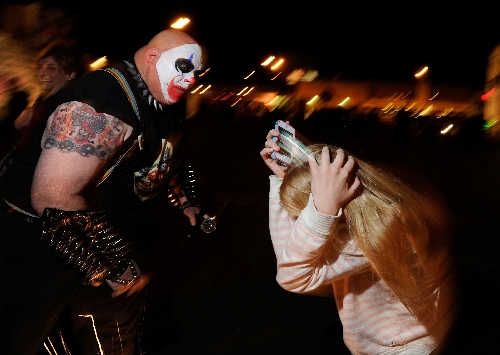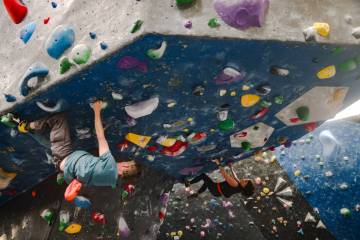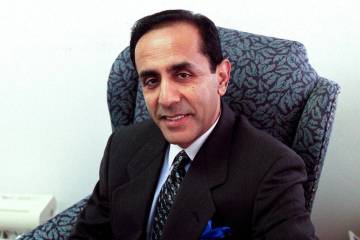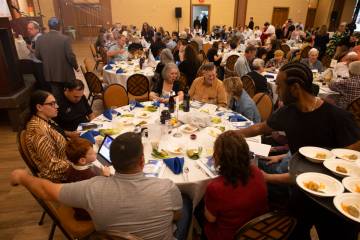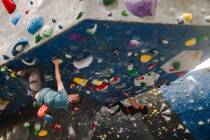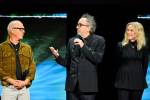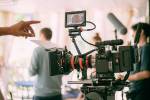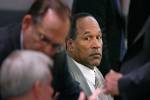Halloween scares offer cleansing catharsis, observers say
It never fails to surprise JT Mollner.
Mollner and his family run Freakling Bros., which has operated Halloween haunted houses in Southern Nevada for two decades. This year, Freakling Bros. again is offering among its trio of attractions at 2321 N. Rainbow Blvd. "Gates of Hell," which Mollner calls "the only R-rated haunted house in Las Vegas."
"Gates of Hell" is open only to those age 17 and older. It deals in themes more intense than those found at typical haunted houses, Mollner says, and guests must sign waivers acknowledging that their trip may include "physical contact."
Guests even are given a "safe word" to utter if they want to cut their visit short, and Mollner estimates that three out of 10 visitors to "Gates of Hell" end up bailing.
But that's not the weird thing. This is: Mollner says people who complete their trip sometimes tell him that it was "less of a fun experience and more of a challenge, and they come out sweating and screaming."
And then? "After they catch their breath, they buy another ticket."
Fear. We go to great lengths to avoid experiencing it in our everyday lives, at the same time that we'll run toward Halloween haunted houses, the latest Stephen King chiller or the just-opened megahorror movie like zombies toward a fat guy with a broken leg.
Why? Because nothing feels better than a really good scare.
"I personally think that people like to get scared because it makes them feel much more alive," says Mollner, and visiting a Halloween haunted house allows them to experience fear "in a controlled environment.
"My dad, Duke Mollner, who started the company, I remember him telling me when we first started to do this that people like to get scared in haunted attractions because it creates a safe environment to feel danger in without the risk. It's a way to feel the rush of adrenaline without the consequences.
"There are a lot of people who come back to haunted houses over and over again. It's like a drug. They like to feel that rush."
And, for that rush, thank the amygdala, a part of the brain "where fear cues are appraised," says Stephen Benning, an assistant professor of psychology at the University of Nevada, Las Vegas whose areas of research include fear and how the brain responds to it.
When we perceive a threat, the brain assesses the threat and "the body gets prepared to do something," Benning says. In most cases, the brain will prepare the body to withdraw from the threat, be it prehistoric saber-toothed tiger or modern-day mugger. Toward that end, the brain will, for instance, send more blood to the muscles and pump out chemicals that will make us feel more alert and give us a jolt of energy.
Note, by the way, that fear and anxiety are two different things. They're processed in different, albeit related, parts of the brain, but anxiety is more of an uncertainty that something bad might happen, Benning says, while fear is a response to a threat that already exists.
"Haunted houses are really good at eliciting both fear and anxiety," he adds. When the fake zombie jumps out at you, you'll feel fear, but even before that, "when you walk through the haunted house, you're already setting yourself up mentally to say, 'I know something bad will be coming at me and I know it will be scary.' "
We usually try to avoid things that cause us to be fearful, and for good reason: Lots of the stuff that scares us also can hurt us or kill us. Yet, at the same time, we still can crave the excitement and physical rush an encounter with danger elicits. By watching a scary movie, walking through a haunted house or listening to a ghost story around the campfire, we can wallow in the physical and emotional rush of a good scare, but in a safe, controlled environment.
"I think, basically, we like to get scared to stimulate us," says David Schmoeller, an associate film professor at UNLV and a director whose credits include the 1979 horror film "Tourist Trap." At a horror movie, "it's all over in two hours and we can leave and get a hamburger and we're still alive. So, it's a cathartic experience."
Chad Clinton Freeman, founder of the PollyGrind film festival (which runs through Saturday ), likens seeing a scary movie to the thrill of riding a roller coaster.
"It's that same attraction of being able to go somewhere that you can't go in life and doing it safely," he says. "You get the feeling, the adrenaline rush, and it really amps you up. You get to experience these things by seeing them, and you get to do it in a safe environment. Then, at the end, you can go back to your life."
Jimmie Gonzalez has been enjoying the thrill of scary movies since he was about 5. Now, watching DVDs of the movies he saw in a theater as a kid brings back not just the excitement of being scared that he felt back then, but a rush of nostalgia, too.
Gonzalez is working on his own horror film - "The Red Man" - that he hopes to release next year. Among his all-time scariest movies: "The Exorcist," which, he says, was "the one that made me search for what's next."
Michael Ian Borer, an associate professor of sociology at UNLV, says experiencing a controlled scare by seeing a horror movie or visiting a haunted house can be a way to work through our real-life fears.
For example, Borer says horror movies experienced a surge in popularity after the Sept. 11, 2001, terrorist attacks, which meshes with research that says "people tend to be more interested in horror films at times when there's a lot of cultural conflict or social crisis."
Schmoeller notes, too, that the dawn of the nuclear age spawned "the nuclear monsters of the '50s and '60s," while the Vietnam and post-Vietnam era mirrored societal tensions of the time via horror movies that featured "humans being brutal to humans."
Experiencing a safe scare also helps us escape, even if only temporarily, the boredom and routine of daily life.
"I don't want to overgeneralize, but I think people can use these (horror) films to sort of jolt themselves back to sensuousness, back into feeling, because our days are so sped up - we go through our days so quickly - that we can feel somewhat numb," Borer says.
Walking through a haunted house or seeing a good horror film can "jolt us out of that numbness, out of our normal, taken-for-granted, everyday life," he says.
Surviving a good scare - even in controlled conditions - also can make us feel more empowered in our lives, Freeman says.
"A lot of times, people ask, 'Why would anyone want to see (a horror movie) when there are so many horrific things in life?' When things happen in life, it's very sad, very depressing. When I go to watch a movie and I feel creeped out and I feel scared and I see something awful, especially when there's a character you can identify with that will pull through, you feel a really strong sense of empowerment and overcoming, and I view that in a positive way."
But, above all, there's this: Being scared is just so darned fun. When we walk through a haunted house, watch a scary movie or listen to a ghost story around the campfire, at least we're not thinking about the more depressing, more complicated fears and anxieties we face in our daily lives.
"Personally, when I watch a movie, I want to escape reality and feel something," Freeman says. "Horror movies, they definitely make me forget about bills and various things in my life for that time that I'm watching and just wrapped up in the story."
Contact reporter John Przybys at
jprzybys@reviewjournal.com or 702-383-0280.






